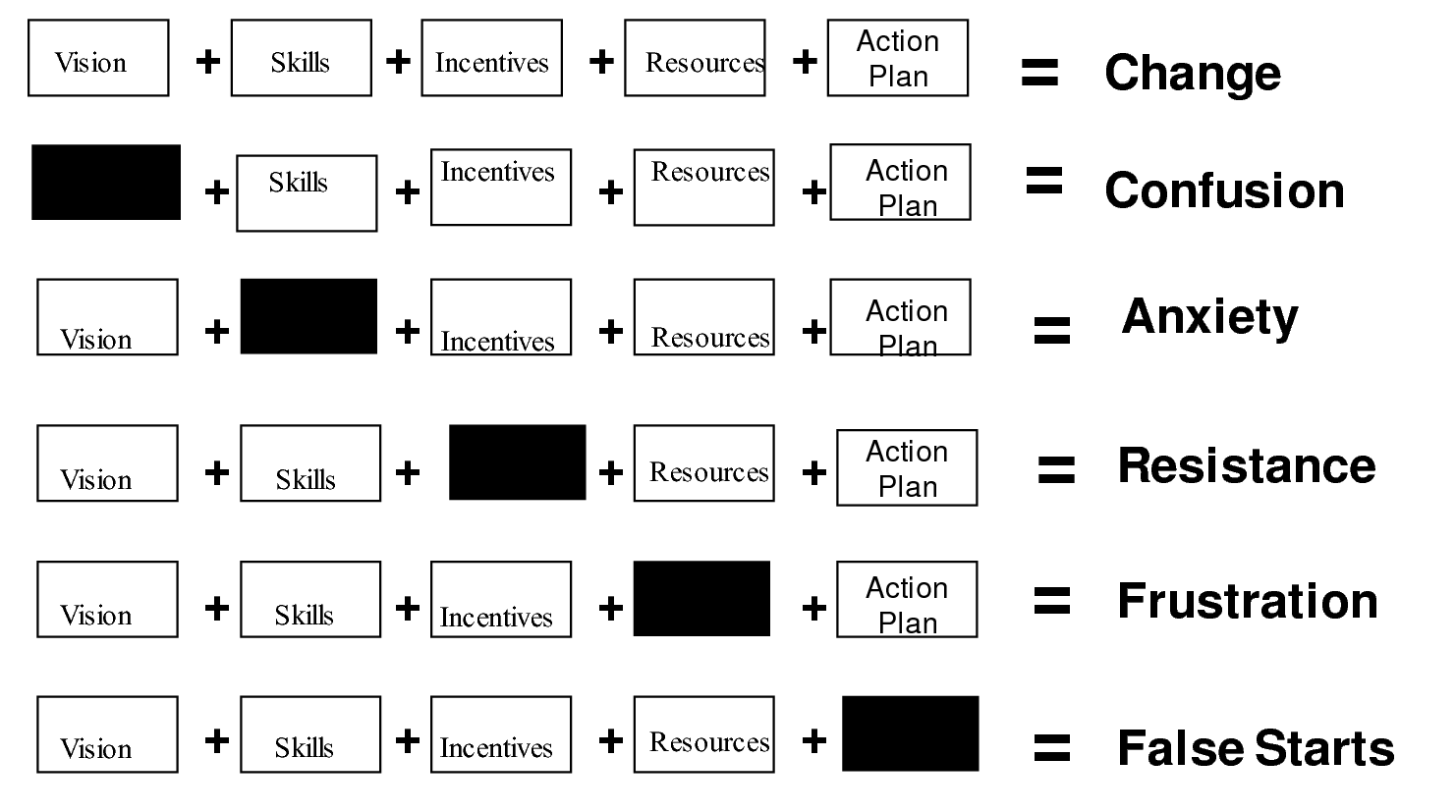Five reasons why your organisational change project may be doomed to fail
By Hamish Williams
Unless you’ve got two hundred years’ experience with complex organisational change, it’s unlikely you’ve experienced and managed every possible issue that can arise. While change is by nature a dynamic and volatile process, there is some value in simplifying the major organisational components required in order to diagnose problems as they occur. Many change management experts will espouse the benefits of getting to the root of the problem early in a change management program so that issues don’t derail the program completely.
One model for diagnosing problems during complex change programs that still remains very popular is the one presented by Professor Tim Knoster to The Association for Severely Handicap (TASH) in 1991. The model can be applied to a variety of organisational settings, from schools to large corporates and even informal social groups or families.

As you can see, the simplicity of the model is quite brilliant as it not only displays what the components of successful change are but also what the negative consequences are for removing any of the components. All of us have seen these consequences manifest themselves in one way or another during times of complex change, so how do we make sure we have all of the components in place to ensure the change is ultimately successful?
- Vision – Have you clearly articulated the “why” of your change project? Do your people all have a clear picture of the intended end result, even if it’s only at a broad macro level?
- Skills – Do you have the internal capability to actually achieve the intended change? What are the skillsets required by your teams to make crucial transitions?
- Resources – While your change project may have the intended consequence of having a lower cost base or the ability to operate with fewer resources, you cannot begin a change project by removing resources.
- Incentives – While your vision may be to have a more effective and efficient organisation, what does that effectiveness and efficiency mean to your people? What incentive are you providing for them to build the effectiveness and efficiency of the organisation?
- Action Plan – While it may seem like you are prolonging the proverbial agony, a change program should be mapped out with clear deliverables and realistic timelines. Adhering to robust project management principles is essential for ensuring your change program stays on track until completion.
Ultimately, successful organisational change is all about bringing your people with you on the journey. Leave people behind at your peril as they will return to sabotage your project any way they can. That is to be expected as human nature is what takes over when organisational culture fails. The only surefire safeguard against failed organisational change is outstanding leadership.
